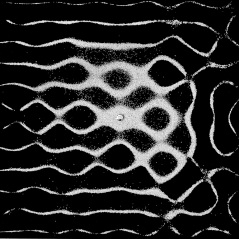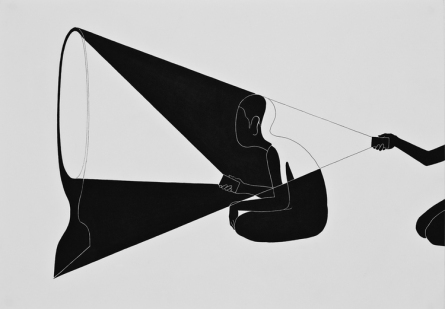After reviewing the results of our reading survey, those apparent areas/authors of greatest interest are:
- Alexander Galloway and Eugene Thacker: The Exploit: A Theory of Networks
- with Alexander Galloway’s The Interface Effect in a close second.
- Jacques Ranciere: The Future of the Image
- …and Alfred North Whitehead: Process and Reality
Antonio Caronia’s The Cyborg and Didi Huberman’s Confronting Images: Questioning the ends of a certain history of art also ranked highly, but had a higher level of disinterest (i.e. people’s desire to read these texts were polarized). [1]
As Galloway is by far the easiest to read of the three thinkers presented, I think he is a good place to start/trial run the group reading dynamic. Beyond that, I propose we move into the Whitehead, which I imagine will be the most intense and then finish with the Ranciere (given remaining time on hand).
Since both of the proposed Galloway texts received high levels of interest, I suggest that we read them both – with individuals choosing which texts and which sections of which texts they would prefer to read. Towards this end, I have created a poll where individuals can sign up for whichever sections they would prefer to read. This way, we can make sure that the majority of the texts are covered, but also we can see who else is reading the same portion of the text as ourselves…. and thus who we can speak to about the content.
I have broken up The Exploit into relatively few sections because it is (by design) written for content skimming. Thus, I think more conceptual ground can be covered more quickly. Also, I have not included the introduction/prologue or conclusion sections for either text as I believe in at least skimming the introductions and conclusions of all texts anyway. In both, these sections are relatively short. The following section contains the Table of Contents for both texts so that you can decide what you would like to read.
[1] Personally, I will be reading The Cyborg, so if anyone would like to personally join me in that endeavor… we can have coffee.
The Exploit
On Reading This Book vii
Prolegomenon: “We’re Tired of Trees” 1
Provisional Response 1: Political Atomism (the Nietzschean Argument)—Provisional Response 2: Unilateralism versus Multilateralism (the Foucauldian Argument)—Provisional Response 3: Ubiquity and Universality (the Determinist
Argument)—Provisional Response 4: Occultism and Cryptography (the Nominalist Argument)
Part I. Nodes 23
Technology (or Theory)—Theory (or Technology)—Protocol in Computer Networks—Protocol in Biological Networks—An Encoded Life—Toward a Political Ontology of Networks— The Defacement of Enmity—Biopolitics and Protocol—Life – Resistance—The Exploit—Counterprotocol
Part II. Edges 103
The Datum of Cura I—The Datum of Cura II—Sovereignty and Biology I—Sovereignty and Biology II—Abandoning the Body Politic—The Ghost in the Network—Birth of the Algorithm—Political Animals—Sovereignty and the State of Emergency—
Fork Bomb I—Epidemic and Endemic—Network Being—Good Viruses (SimSARS I)—Medical Surveillance (SimSARS II)—Feedback versus Interaction I—Feedback versus Interaction II—Rhetorics of Freedom—A Google Search for My Body—Divine Metabolism—Fork Bomb II—The Paranormal and the Pathological I—The Paranormal and the Pathological II—Universals of Identification—RFC001b: BmTP—Fork Bomb III— Unknown Unknowns—Codification, Not Reification—Contents Tactics of Nonexistence—Disappearance; or, I’ve Seen It All Before—Stop Motion—Pure Metal—The Hypertrophy of Matter (Four Definitions and One Axiom)—The User and the Programmer—Fork Bomb IV—Interface—There Is No Content—Trash, Junk, Spam
Coda: Bits and Atoms 149
Appendix: Notes for a Liberated Computer Language 159
The Interface Effect
Introduction: The Computer as a Mode of Mediation 1
1 The Unworkable Interface 25
2 Software and Ideology 54
3 Are Some Things Unrepresentable? 78
4 Disingenuous Informatics 101
Postscript: We Are the Gold Farmers






